#Brule Sioux
Text

Edward S Curtis Native American 1900s
Little Hawk - Brule Sioux - c. 1907
50 notes
·
View notes
Text

Four Indian Chiefs: sitting are Sitting Bull (Hunkpapa Lakota), Red Cloud (Oglala Lakota), and Swift Bear (Brule Sioux). Standing are Julius Meyer, an Indian interpeter, and Spotted Tail (Brulé Lakota).
96 notes
·
View notes
Text
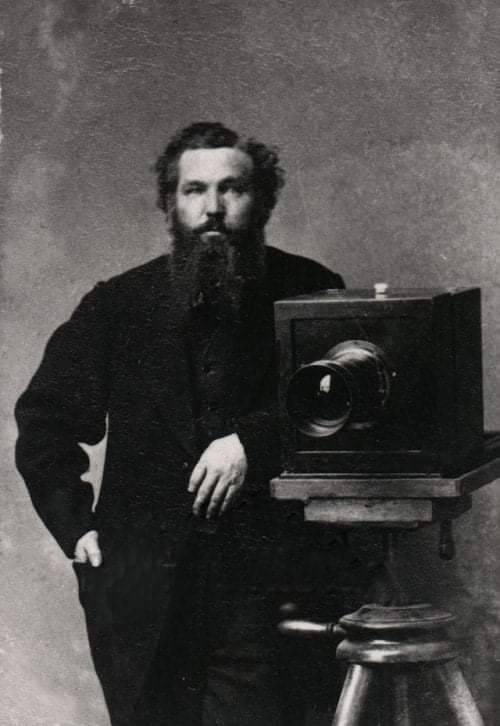





On 17th October 1821 Alexander Gardner, renowned photographer of the American Civil War was born in Paisley.
Gardner became an apprentice jeweller at the age of 14, lasting seven years. He had a Church of Scotland upbringing and was influenced by the work of Robert Owen, Welsh socialist and father of the cooperative movement. By the time he reached adulthood he and his brother James had the idea to create a cooperative in the United States that would incorporate socialist values, they travelled to Iowa with this in mind in 1850, Alexander returned to Scotland to raise money for the project and purchased the Glasgow Sentinel, quickly turning it into the second largest newspaper in the city.
On his return to the United States in 1851, Gardner paid a visit to the Great Exhibition in Hyde Park, New York, where he saw the photographs of Mathew Brady for the first time. Shortly afterward, Gardner began reviewing exhibitions of photographs in the Glasgow Sentinel, as well as experimenting with photography on his own.
In 1856, Gardner decided to over permanently to America, eventually settling in New York. He soon found employment with Mathew Brady as a photographer. At first, Gardner specialized in making large photographic prints, called Imperial photographs, but as Brady’s eyesight began to fail, Gardner took on more and more responsibilities. In 1858, Brady put him in charge of the entire gallery.
Two years later, Gardner opened a portrait studio for Brady in Washington, D.C. It was so successful that it helped to support Brady’s more extravagant New York studio.
When the American Civil War erupted in 1861, Gardner assisted Brady in his effort to make a complete photographic record of the conflict. Brady, however, refused to give Gardner public credit for his work. Gardner therefore left Brady in 1863, opened a portrait gallery in Washington, and continued to photograph the hostilities on his own. His photographs President Lincoln on the Battlefield of Antietam as seen in the photos and other portraits of Lincoln are among the best-known photographs of the war period.
Gardner’s Photographic Sketch Book of the Civil War, a two-volume collection of 100 original prints, was published in 1866. When Brady petitioned Congress to buy his photographs of the war, Gardner presented a rival petition, claiming that it was he, not Brady, who had originated the idea of providing the nation with a photographic history of the conflict. Congress eventually bought both collections.
In 1867 Gardner became the official photographer for the Union Pacific Railroad. Primarily active in Kansas, he photographed the building of the railroad and the new settlements that grew up near it. He also compiled valuable photographic documentation of the Plains Indians of North America.
Returning to Washington, he gradually lost interest in photography and devoted the rest of his life to philanthropy.
In 1871, Gardner gave up photography entirely to start an insurance company. He lived in Washington until his death in 1882. Regarding his work he said, “It is designed to speak for itself. As mementos of the fearful struggle through which the country has just passed, it is confidently hoped that it will possess an enduring interest.”
The first pic is of Alexander Gardner, next is Ta-Tan-Kah-Sa-Pah (Black Bull) of the Brule-Sioux tribe, North Dakota, President Lincoln on Battle-Field of Antietam and Abraham Lincoln and his son Thomas, then Lewis Payne, one of the men involved in the assassination of Abraham Lincoln and finally the Leavenworth, Lawrence, and Galveston Railroad Bridge across the Kaw River at Lawrence, Kansas, in 1867
22 notes
·
View notes
Text
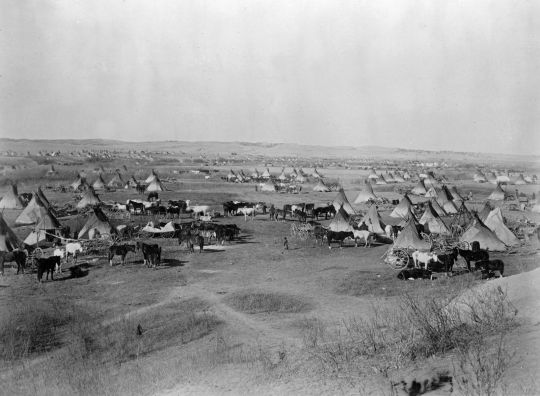
Lakota native American camp in South Dakota. 1877

Bird's Eye View of Sioux Camp at Pine Ridge, South Dakota

Lakota native American camp on river Brule near Pine ridge, South Dakota, 1891.

Lakotas lived in tipis that could be easily transported from one camp to another. This mobility suited their bison hunting economy. A small camp like this would have been set up near the place where the Lakotas were hunting bison. The people would have remained very quiet in a hunting camp. The tops of the tipis are dark with smoke from the cooking fires.
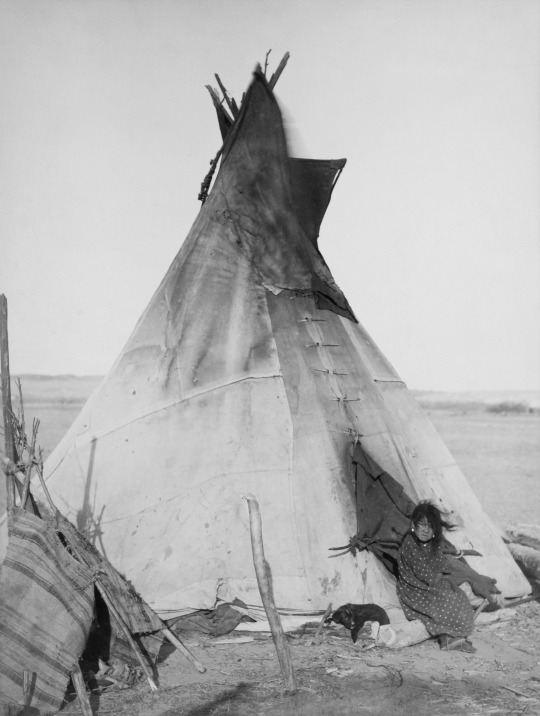
A young Oglala girl sitting in front of a tipi, with a puppy beside her, probably on or near Pine Ridge Reservation

This man’s regalia (ceremonial clothing) reflects the spiritual importance the Lakotas gave to the bison. His headdress was made from the head and horns of a bison bull. The vest, wrist bands, and ankle bands were made from bison hide.

Native Americans performing ritual Ghost Dance. One standing woman is wearing a white dress, a special costume for the ritual dance, 1890.

Sioux warriors typical of those who fought Custer photographed in dance costumes.

Ghost Dance Drum by George Beaver, wood, rawhide and pigment, late 1890s
#photography#historical photos#lakota#indigenous#native american#Ghost Dance#oglala#bison#lakota sioux#sioux#south dakota
16 notes
·
View notes
Text

Did you know that Lower Brule Sioux and US Marine Colonel Gregory "Pappy" Boyington was awarded the Medal of Honor, the Navy Cross, the Purple Heart and the Prisoner of War Medals?
Pappy Boyington was initially a US Marine Corps aviator with the Pacific fleet before being recruited by the legendary "Flying Tigers" (1st American Volunteer Group) in the Republic of China Air Force in Burma at the end of 1941 and part of 1942, during the military conflict between China and Japan, and the beginning of World War II.
In September 1942, he rejoined the Marine Corps (he had been an aviator before the war). In early 1943, he deployed to the South Pacific and began flying combat missions as a Marine F4U Corsair fighter pilot.
In September 1943, he took command of U.S. Marine Corps fighter squadron VMF-214 ("Black Sheep"). In January 1944, Boyington, outnumbered by Japanese "Zero" planes, was shot down into the Pacific Ocean after downing one of the enemy planes. He was captured by a Japanese submarine crew and was held as a prisoner of war for more than a year and a half.
He was released shortly after the surrender of Japan, and a few days before the official surrender documents were signed.
The television series Baa Baa Black Sheep was inspired by Boyington and his men in the "Black Sheep" squadron. It ran for two seasons in the late 1970s.
3 notes
·
View notes
Text

Crazy Horse — 1842-1877
Crazy Horse, a principal war chief of the Lakota Sioux, was born in 1842 near the present-day city of Rapid City, SD. Called “Curly” as a child, he was the son of an Oglala medicine man and his Brule wife, the sister of Spotted Tail. By the time he was twelve, he had killed a buffalo and received his own horse. His father gave him his own name, Crazy Horse.
While living with his uncle Spotted Tail, Crazy Horse watched as a group of soldiers attacked Sioux leaders who were trying to mediate a dispute. Spotted Tail then led a group of warriors to attack the soldiers. Sometime later Crazy Horse returned from a buffalo hunt to find the village burned to the ground and eighty-six people dead. Finding a few survivors, Crazy Horse was told that U.S. cavalry had attacked the village.
While still a young man Crazy Horse went on a vision quest and had a vivid dream of a rider in a storm on horseback, with long unbraided hair, a small stone in his ear, zig zag lightning decorating his check and hail dotting his body. The storm faded and a red-backed hawk flew over the rider’s head. His father interpreted the dream as a sign of his son’s future greatness in battle. Crazy Horse adopted the costume as his war dress.
During Red Cloud’s War in 1866-1868 Crazy Horse joined in raids against white settlements and forts in Wyoming. When the Treaty of Fort Laramie was signed in 1868 and the Army agreed to abandon its posts along Bozeman Trail, Red Cloud and Spotted Tail settled on reservation lands. Crazy Horse became the war chief of the Oglalas. He was only 24 years old.
Crazy Horse learned in 1874 that General Custer had led an expedition into the sacred Black Hills and found gold at French Creek. Prospectors and speculators swarmed into Sioux land ignoring the fact that the land had been guaranteed to the Lakota by the Fort Laramie Treaty. To ensure the safety of the white travelers, the government issued an order requiring that the Sioux bands be required to stay on the Great Sioux Reservation. Crazy Horse and his followers ignored the order and the Army organized a campaign against them.
On the upper Rosebud Creek in southern Montana, General George Crook’s army of thirteen hundred attacked twelve hundred warriors led by Crazy Horse. Crazy Horse had over the years become a daring military strategist, adept in the art of decoying tactics. His feinting and assault techniques baffled Crook who withdrew. Crazy Horse now joined with Sitting Bull and Gall at the Bighorn River in Montana.
When Custer attacked on June 25, 1876 Crazy Horse led his warriors against Custer’s men from the north and west, while Gall charged Custer from the south and east. Custer’s force, including Custer himself was completely destroyed. After the battle the Sioux encampment split up with Sitting Bull heading to Canada and Crazy Horse and his followers traveling back to the Rosebud River. However, despite winning several battles, Crazy Horse band could not win the war. Intense harassment by the military and the loss of their food source, the buffalo, finally forced Crazy Horse and his followers to surrender on May 6, 1877 at Ft. Robinson in northwest Nebraska.
He was promised a reservation in the Powder River country. It did not happen. After a few months on Red Cloud’s reservation Crazy Horse left without permission to take his sick wife to her family at the Brule Agency about 40 miles away. On his way back forty government scouts arrested him. While being lead toward a stockade, Crazy Horse resisted at the sight of the prison. A soldier bayoneted him through the abdomen. He died the same night.
3 notes
·
View notes
Text

stereograph depicting six chiefs riding in president theodore roosevelt's inauguration parade on march 4, 1905. individuals depicted include goyathlay (geronimo; chiricahua apache), quanah parker (comanche), buckskin charlie (ute), hollow horn bear (brule sioux), american horse (oglala lakota), and little plume (piegan blackfeet). the photo was probably shot by b. l. singley
0 notes
Text
I analyze the documentary series "Skindigenous," which delves into Indigenous tattooing traditions from around the world. The show celebrates the cultural heritage and significance of tattoo practices, dismissing misconceptions and promoting respect for authentic cultures. By giving Indigenous communities a platform to share their stories, the series generates conversations about cross-cultural understanding, appreciation, and acceptance of diverse traditions and identities in a multicultural society.
"Remember the Titans” is a movie about unity and diversity in football. It centers on racial integration in a football team during the 1970s. The film showcases the significance of teamwork, unity, and leadership in overcoming racial prejudices and embracing diversity. It sparks conversations about race, ethnicity, and cultural diversity by reflecting on the challenges and triumphs of desegregation in America.
Nick Estes is a powerful voice for Indigenous rights. I discuss how historian and writer Nick Estes, a member of the Lower Brule Sioux Tribe, is involved in multiculturalism through his activism for Indigenous rights. Estes challenges dominant cultural narratives that tend to exclude Indigenous voices, beliefs, and cultures. He highlights the importance of accurate and respectful depictions of Indigenous communities and sheds light on their ongoing struggles. He promotes cooperation between Indigenous folks and multicultural societies in addressing contemporary issues.
From these three blogs, I learned from strong voices and representations of communities in America that have experienced marginalization. Nick Estes uses his power as a historian and activist to allow more Indigenous voices to be heard. I was surprised to learn that a significantly sized community does not always have an equal say in politics regarding [especially] land rights. “Remember the Titans” is a microcosm of the desegregation era in America. How whites and blacks can find common ground when avoidance is eliminated from strategy of keeping the peace. “Skindigenous” sheds light onto Native tattoo practices through personal stories of indigenous individuals. A common misconception about tattoos is that they resemble rebellion or the breaking of social norms. The series tries to show how tattoos are a dedication to spiritual practices of Indigenous people and that their meaning is rooted into their culture, not a rebellious dismissal of modern culture.
0 notes
Text

Fool Bull, Tatanko Witko: (1844 - 1909) medicine man among the Brule Sioux. In his youth he had taken part in the so-called Sioux Massacre of Pawnees in 1873. During the battle Fool Bull was injured after a boy had fired at him with a pistol - point blank. It knocked out his eyesight and it took months before the powder burns healed. Fool Bull was also a participant in the battle of Little Big Horn in 1876. He claimed the shield he is holding in the photo was the one he used at Little Big Horn battle.
He had two wives, Red Crane and Getting Around. When he died on December 20, 1909 he was a widower. His sons were Richard b. 1887 and John b. 1889.”
1 note
·
View note
Photo
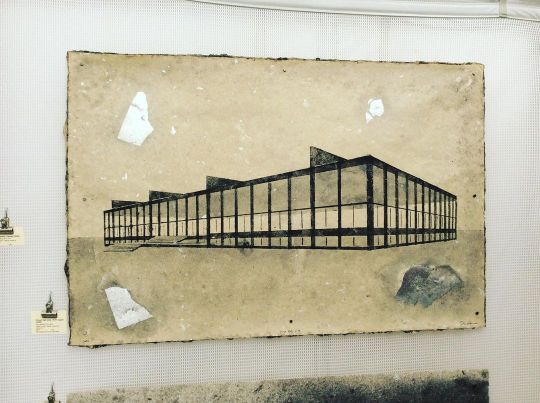
I’m showing two new pulp paintings today at @lagrangearts near Stone Station. “Crown Hall no. 16” includes silver foil embellishments. “White Crow” is based on a Brule Sioux legend. The fair runs 10-5 Sat and Sun. #donwidmerpaperarts #pulppainting #handmadepaper #artfairs #lagrangearts #crownhall #miesvanderrohe #whitecrow #brulesioux #birdart (at Stone Avenue station) https://www.instagram.com/p/CiVTCVZLEHT/?igshid=NGJjMDIxMWI=
#donwidmerpaperarts#pulppainting#handmadepaper#artfairs#lagrangearts#crownhall#miesvanderrohe#whitecrow#brulesioux#birdart
1 note
·
View note
Text

Large photographs document Sioux [Lakota and Dakota] and Fox delegations, most wearing western suits, some posed with government officials, to Washington, D.C. Captions below photographs identify sitters. The collection includes a studio portrait of Sioux delegation (20 individuals), Feb. 1891; U.S. Commissioners and delegations of Sioux chiefs visiting Washington, D.C., Oct. 15, 1888, on the steps of the Capitol building [Rosebud, Standing Rock, Pine Ridge, Cheyenne River, Crow Creek, and Lower Brule agency delegations are represented]; a delegation of Sioux Indians, 1891 (40 individuals); a delegation of Sioux chiefs to ratify the sale of lands to the U.S. government, Dec. 1899 (21 individuals); a group of seven Sioux "warriors," Feb. 1891; and a group of five Fox Indians wearing traditional clothing, 1890.
Rosebud Agency Delegation.
11. Ugly Wild-Horse.
12. Pretty Eagle.
13. He-Dog.
14. Good Voice.
15. Quick Bear.
16. Black Wolf.
17. Swift Bear.
18. King Thunder.
19. Two Strike.
20. Gray Eagle-tail.
21. Sky Bull.
22. Red Fish.
23. Yellow Hair.
24. Eagle Horse.
25. Thos. Flood, Interpreter.
26. Col. L. F. Spencer, Agent at Rosebud.
Standing Rock Agency Delegation.[16 men]1885 Standing Rock heads of families27. Sitting Bull.Tatanka IyotakeUncpapa chief35228. Steph Two-bears.Mato NonpaLower Yancktonnai chief129. Bear's Rib.Broken Bear Rib? Mato Cuwiyuksa Uncpapa chief2730. Thunder Hawk.Cetan WakiyanUncpapa chief131. High Eagle.Wanbli WakantuyaUncpapa chief4732. Big Head.Nasuna TankaUpper Yancktonnai chief133. Mad Bear.Mato KnaskiyanLower Yancktonnai chief12934. Gray Eagle.Wanbli RitaUncpapa chief24035. Hairy Chin.Iku HinsmanLower Yancktonnai26136. Walking Eagle.Wanbdi ManiLower Yancktonnai chief20437. High Bear.Mato WakantuyaUncpapa chief15338. Fire Heart.Cante PetaBlackfeet7939. John Grasse.Mato Watakpe / Charging BearBlackfeet chief140. Gaul.Pizi [Gall]Uncpapa chief21641. Louis Primeau, Interpreter.Blackfeet17442. Maj. Jas. A. McLaughlin, Agent at Standing Rock.7 Uncpapa
4 Lower Yancktonnai
1 Upper Yancktonnai
3 BlackfeetPine Ridge Agency Delegation.
43. Dog Back.
44. Standing Soldier, 1st Lieut. Police.
45. Yellow Bear.
46. Little Hawk.
47. Little Wound.
48. Little Chief (Cheyenne).
49. Pretty Lance.
50. Standing Elk (Cheyenne).
51. Fast Thunder.
52. No Flesh.
53. American Horse.
54. Capt. Geo. Sword, Police Force.
55. Plenty Bears.
56. Benj. Rowland, Interpreter.
57. Philip Wells, Interpreter.
58. Col. H. D. Gallager, Agent. Cheyenne River, Crow Creek, and Lower Brule Delegations.
59. White Ghost.
60. Drifting Goose.
61. Bowed Head.
62. Little Bear.
63. Spotted Elk.
64. Crow Eagle.
65. White Swan.
66. Charger.
67. Spotted Eagle.
68. Swift Bird.
69. Little No-heart.
70. Narcisse Narcell.
71. Wm. Larabee, Interpreter.
72. Dr. C. E. McChesney, Agent at Cheyenne River
73. Mark Wells, Interpreter.
74. Capt. Wm. Carpenter
75. Maj. W. W Anderson, Agent Crow Creek and Lower Brule
76. Capt. Fire-thunder, Police force.
77. Alex. Recontre, Interpreter.
78. Medicine Bull.
79. Bull Head.
80. Wizi. (stamp)Library of Congress, Copyright Jul 27 1889 Washington.
8 notes
·
View notes
Text
Support the kids in Lower Brule by donating $$ or ordering from the Amazon wishlist https://www.amazon.com/hz/wishlist/ls/DEPP8O6HWMN4?type=wishlist
Reach out to Kansas Middletent for more info and ways to help the #RisingStars
Mike Henriksen will also be helping coordinate upcoming opportunities to donate supplies in person in Sioux Falls to be transported to the kids in time for their Back to School Supply Give Away.
0 notes
Photo


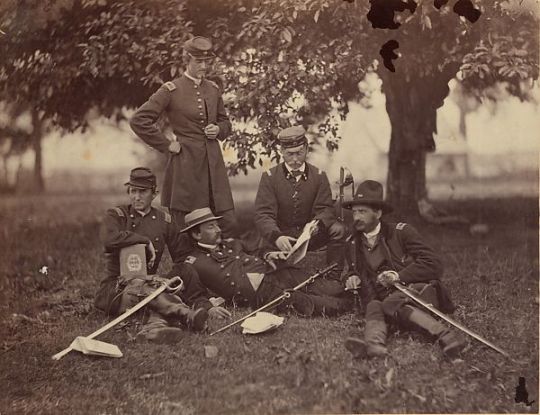
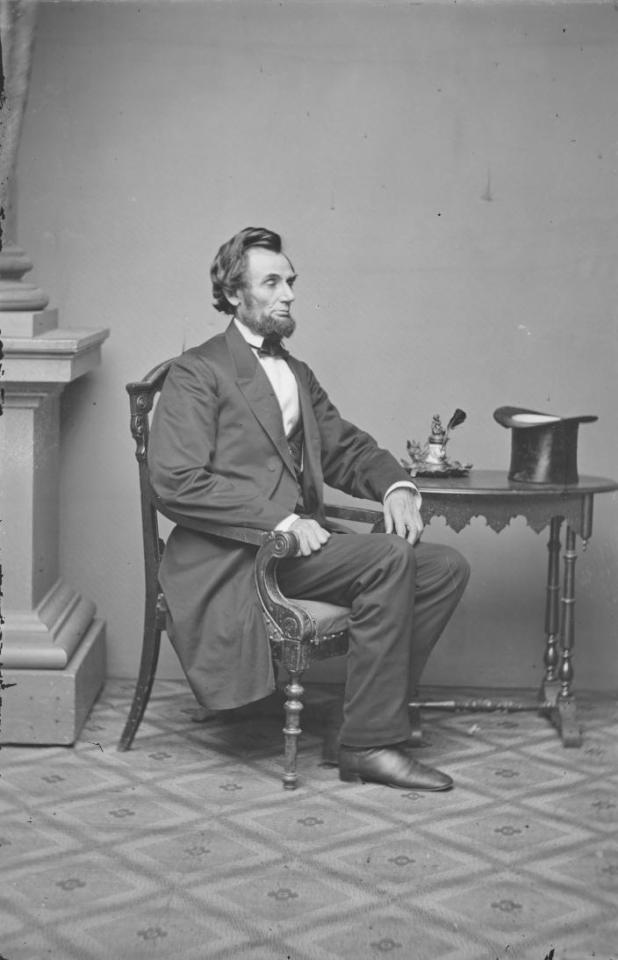



On 17th October 1821 Alexander Gardner, renowned photographer of the American Civil War was born in Paisley.
Gardner became an apprentice jeweller at the age of 14, lasting seven years. He had a Church of Scotland upbringing and was influenced by the work of Robert Owen, Welsh socialist and father of the cooperative movement. By the time he reached adulthood he and his brother James had the idea to create a cooperative in the United States that would incorporate socialist values, they travelled to Iowa with this in mind in 1850, Alexander returned to Scotland to raise money for the project and purchased the Glasgow Sentinel, quickly turning it into the second largest newspaper in the city.
Alexander Gardner emigrated to the United States in 1856 and worked at the New York City studio of Mathew Brady, coming into contact with numerous politicians and military figures. After the outbreak of the Civil War, Brady photographed the conflicts, sending his team of photographers, including Gardner, into the field. Alexander Gardner left Brady’s studio in 1862 to open his own in Washington, D.C.; at this same time, he also became employed by General McClellan as official photographer of the Union Army’s U.S. Topographical Engineer Corps.
After the war, Gardner photographed many notables including President Lincoln, the Lincoln conspirators, and Indian delegations visiting Washington. In 1867, Gardner joined the survey team for what became the Kansas Pacific Railroad. The railroad was promoting plans for an extension of its route from Kansas to the Pacific Ocean. This proposed route, from Kansas through the mountains of Colorado and deserts of New Mexico, Arizona, and California, would serve to placate the Indians and provide access to the markets of the California. Gardner photographed the path of the proposed extension, emphasizing the ease of future railroad construction and the potential for economic development while including studies of the Indians in the region and settlements along the way. Gardner’s photographs represent the earliest systematic series of the Great Plains.
Gardner photographed many of the Sioux chiefs from the northern plains tribes including Crow, Arapaho, Oglala, Minneconjous, Brule and Cheyenne.
In 1871, Gardner gave up photography entirely to start an insurance company. He lived in Washington until his death in 1882. Regarding his work he said, “It is designed to speak for itself. As mementos of the fearful struggle through which the country has just passed, it is confidently hoped that it will possess an enduring interest.”
Alexander Gardner became sick in the late autumn of 1882 and died shortly afterward on December 10th 1882.
#Scotland#scottish#scots-american#photographer#pioneering photographer#abraham lincoln#indegenous tribes
16 notes
·
View notes
Conversation
U.S. Daily Precipitation Records Tied/Broken 5/31/22
Arapaho National Forest, Colorado: 0.8" (previous record 0.7" 1991)
Unincorporated Boulder County, Colorado: 0.9" (previous record 0.7" 1991)
Rocky Mountain National Park, Colorado: 0.8" (previous record 0.5" 1991)
Brooklet, Georgia: 1.17" (previous record 1.03" 1933)
Unincorporated Kaua'i County, Hawaii: 0.44" (previous record 0.3" 1991)
Unincorporated Kaua'i County, Hawaii: 0.85" (previous record 0.77" 1949)
Ashton, Idaho: 1.12" (previous record 1.1" 1999)
Kamiah, Idaho: 1.23" (previous record 0.82" 2000)
Sedgwick Peak summit, Idaho: 0.3" (also 0.3" 2019)
Spirit Lake, Iowa: 1.88" (previous record 0.42" 1943)
Abilene, Kansas: 2.13" (previous record 1.2" 1898)
Alta Vista, Kansas: 2.8" (previous record 2.46" 1977)
Blue Township, Kansas: 1.92" (previous record 1.46" 1896)
Cottonwood Falls, Kansas: 2.78" (previous record 2.5" 2006)
Ellsworth Township, Kansas: 3.64" (previous record 1.04" 2016)
Garnett, Kansas: 2.8" (previous record 1.55" 1982)
Geneseo, Kansas: 1.63" (previous record 1.25" 2006)
Holton, Kansas: 2.4" (previous record 1.36" 1999)
Lawrence, Kansas: 2.5" (previous record 1.73" 2013)
Lincoln Township, Kansas: 1.39" (previous record 1.31" 2012)
Manhattan, Kansas: 2.52" (previous record 1.98" 1896)
Manhattan Township, Kansas: 1.93" (previous record 0.87" 2012)
McFarland, Kansas: 3.22" (previous record 1.68" 1977)
Rossville, Kansas: 3.63" (previous record 1.8" 2012)
Smoky Hill Township, Kansas: 1.68" (previous record 1.4" 1977)
Wichita, Kansas: 3.9" (previous record 1.76" 2021)
Browns Valley, Minnesota: 1.25" (previous record 0.8" 1996)
Dawson, Minnesota: 0.85" (previous record 0.8" 1951)
Pipestone, Minnesota: 0.94" (previous record 0.92" 2011)
Wheaton, Minnesota: 2.91" (previous record 2.44" 1938)
Kansas City, Missouri: 2.96" (previous record 2.44" 1996)
North Kansas City, Missouri: 3.15" (previous record 2.17" 1959)
Platte Township, Missouri: 1.7" (previous record 1.53" 2013)
Unincorporated Carbon County, Montana: 0.55" (previous record 0.53" 1969)
Custer National Forest, Montana: 0.9" (previous record 0.7" 1987)
Gallatin National Forest, Montana: 0.5" (also 0.5" 1987)
Unincorporated Dawes County, Nebraska: 1.03" (previous record 0.66" 1967)
Unincorporated Sheridan County, Nebraska: 2.06" (previous record 0.98" 2005)
Unincorporated Sioux County, Nebraska: 2.07" (previous record 1.8" 1935)
Unincorporated Elko County, Nevada: 0.65" (previous record 0.57" 1990)
Ashley, North Dakota: 1.75" (previous record 1.42" 2007)
Unincorporated Foster County, North Dakota: 2.02" (previous record 1.04" 2004)
Langdon, North Dakota: 2.08" (previous record 1.35" 2013)
Pembina, North Dakota: 2.33" (previous record 1.73" 2013)
Unincorporated Stutsman County, North Dakota: 1.4" (previous record 0.64" 2018)
Unincorporated Tillman County, Oklahoma: 3.91" (previous record 3.2" 1973)
Alexandria, South Dakota: 2.7" (previous record 1.5" 1991)
Unincorporated Brule County, South Dakota: 0.66" (previous record 0.51" 1996)
Crow Creek Reservation, South Dakota: 2.6" (previous record 0.41" 2013)
Edgemont, South Dakota: 1.28" (previous record 0.74" 2005)
Gettysburg, South Dakota: 2.34" (previous record 1.93" 1949)
Unincorporated Sanborn County, South Dakota: 1" (previous record 0.97" 1954)
Sand Lake National Wildlife Refuge, South Dakota: 2.26" (previous record 1.08" 1971)
Wessington Springs, South Dakota: 0.93" (previous record 0.7" 1996)
Winner, South Dakota: 0.95" (previous record 0.85" 1945)
Lake Chelan National Recreation Area, Washington: 0.8" (previous record 0.43" 1940)
Unincorporated Bighorn County, Wyoming: 1.01" (previous record 0.75" 1992)
Bighorn National Forest, Wyoming: 0.7" (previous record 0.4" 2013)
Black Mt. summit, Wyoming: 1.37" (previous record 0.98" 1971)
Boysen State Park, Wyoming: 0.6" (previous record 0.58" 1979)
Bridger National Forest, Wyoming: 0.5" (previous record 0.3" 1994)
Buffalo, Wyoming: 0.85" (previous record 0.82" 1909)
Casper Mt. summit, Wyoming: 0.7" (also 0.7" 1991)
Cody, Wyoming: 1.1" (previous record 0.7" 1967)
Unincorporated Goshen County, Wyoming: 0.63" (previous record 0.58" 1967)
Medicine Bow National Forest, Wyoming: 0.6" (also 0.6" 1992)
Midwest, Wyoming: 1.13" (previous record 0.97" 1939)
Unincorporated Natrona County, Wyoming: 2.1" (previous record 0.51" 1969)
Unincorporated Natrona County, Wyoming: 0.55" (previous record 0.38" 1947)
Unincorporated Park County, Wyoming: 0.38" (previous record 0.37" 1981)
Pavillion, Wyoming: 1.3" (previous record 0.6" 1967)
Riverton, Wyoming: 1.19" (previous record 1.03" 1971)
Sheridan, Wyoming: 1.69" (previous record 1.08" 1967)
Unincorporated Sheridan County, Wyoming: 2.75" (previous record 0.92" 1992)
South Pass summit, Wyoming: 0.8" (also 0.8" 1989)
Spring Creek Divide summit, Wyoming: 0.5" (also 0.5" 2005)
Teton National Forest, Wyoming: 1.4" (previous record 1.2" 1991)
Togwotee Pass summit, Wyoming: 0.6" (previous record 0.4" 1999)
Unincorporated Washakie County, Wyoming: 1.24" (previous record 0.9" 1971)
Unincorporated Washakie County, Wyoming: 1.3" (previous record 0.7" 2007)
Younts Peak summit, Wyoming: 0.7" (previous record 0.4" 2005)
#Storms#U.S.A.#U.S.#Georgia#1930s#Idaho#1990s#Iowa#1940s#Kansas#1890s#1970s#1980s#Minnesota#1950s#Missouri#Montana#1960s#Nebraska#Nevada#North Dakota#Oklahoma#South Dakota#Washington#Wyoming#1900s#Hawaii#Colorado#Crazy Things#Awesome
0 notes
Text

White Thunder. Brule Sicangu Lakota Sioux. ca. 1880 #history #NativeAmerican #Lakota
0 notes
Link
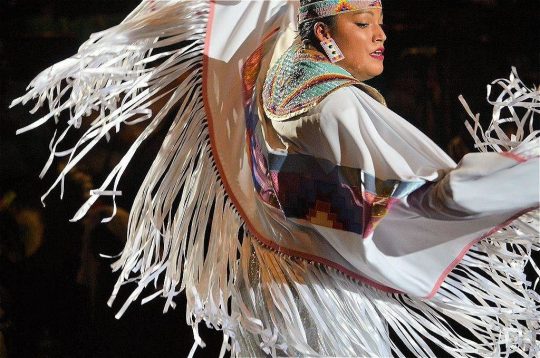
0 notes